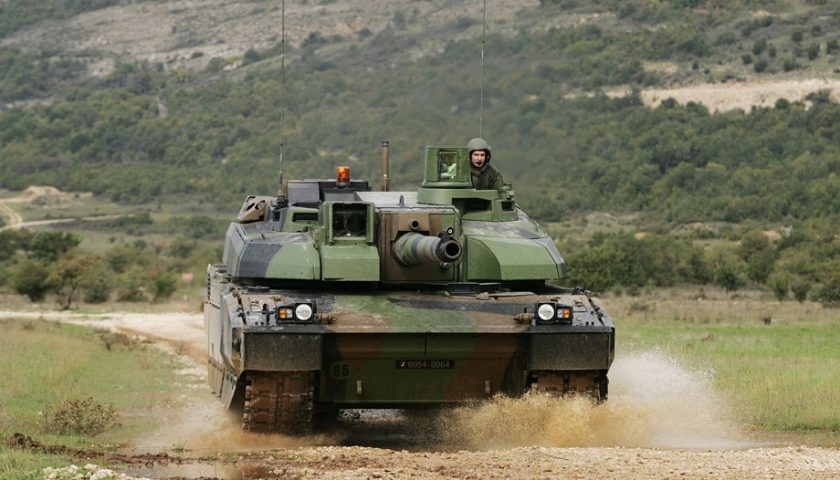During his last hearing as Chief of Staff of the Armed Forces by the Defense and Security Commission of the National Assembly, General Lecointre, questioned by a deputy on what the armies would need to find a defensive posture comparable to that of the 60s and 70s, replied not without malice “4% of GDP, like at that time”. Beyond the humor of a remarkable soldier with a more than exemplary career, General Lecointre clearly posed to the deputies the problem which underlies the efficiency and performance of our armies today, namely the “nerves of war”, the budget they have at their disposal. Afflicted by 15 years of budgetary scarcity even though operational pressure remained significant, the French armies were effectively on the brink of collapse in 2017, and the full execution of the Military Programming Law having brought the Armed Forces budget to 2% of GDP today, will above all have made it possible to stop the capacity hemorrhage and give the military some respite.
However, rapid developments in the international security situation, the acceleration of the technological pace, and the transformations of the geostrategic map, now require us to consider a defense effort well beyond the 2% of GDP required by NATO, especially for a country like France. In this article, we will study the hypothesis of a defense effort at 3% of GDP, or €75 billion per year by 2025, to determine its relevance, sufficiency, and the budgetary and economic consequences, both on the State budget already heavily handicapped by the increase in public debt with the COVID crisis, as well as in the economic and social context of the nation. And as we will see, it is sometimes enough to broaden perspectives and ambitions to see solutions appear until now considered out of reach for the country.
1- Why is 3% GDP necessary and sufficient?
The first question that deserves an answer is to determine at what level the country's defense effort should be located to meet these 3 criteria, namely to be simultaneously sufficient to counter present and future threats; necessary to guarantee the security of the French, of the territory, and the protection of the interests of the country; and sustainable by public finances in a long-term effort. In this sense, taking GDP as a benchmark is relevant, since it gives the value of the wealth produced by the country each year, and therefore is conditioned by numerous parameters, such as the economic health of the country, but also inflation, which directly influence the defense effort itself. If we accept that the GDP benchmark is relevant, what should its optimal value be? Today, the objective of a defense effort at 2% of GDP is consistent with the format of the armies decreed by the Defense White Paper of 2013 and the Strategic Review of 2017, as well as France's overall strategy. , namely to base the security of the country on the force of deterrence, and preserve its interests with a projectable expeditionary force. Unfortunately, this format is no longer in line with the present and future threat, since, as all observers of the defense world will have noted, a new need has emerged in recent years, that of having to face commitments so-called “high intensity”, for which the French armies are not ready.

In addition, and as we have repeatedly addressed in our articles, the intensification of international tensions, but also the return to the scene of major geopolitical players like Russia or China, has profoundly changed the technological defense tempo which was a reference in the last 30 years since the end of the Cold War. Therefore, it is necessary not only to increase the size of the armies to take into account these High Intensity commitments, but also to increase research and development efforts, as well as the pace and volume of acquisitions, in order to to bear comparison with these military powers. What applies to High Intensity also applies to national nuclear deterrence, which over the last 30 years, although politically preserved, has seen its format shrink as the risk of nuclear conflicts has diminished, but has not followed suit. reverse path when the threat reappeared. In this context, 3%, or €75 billion in 2025, would make it possible to strengthen the armies by 25% in manpower, to accelerate and increase industrial defense programs, and to strengthen deterrence to levels consistent with reality. present and future threat. Below that, it's too little. Above, it is not necessary, for the moment at least
Another criterion to take into account, at the European level this time, the Defense budgets of France and Germany have always been close in absolute value since the rearmament of Federal Germany, so that none of the two former rivals cannot gain military ascendancy over the other. However, Berlin is, like all NATO members, required to increase its Defense budget to 2% of its GDP, this being, more or less, 40% higher than that of France (3.800 $ billion vs. $2.700 billion). From then on, with a defense effort at 3%, Paris would maintain the balance essential to security and good European understanding vis-à-vis a Germany at 2%, even pushing the latter to make more efforts in this domain. Finally, and we will see it later in this article, 3% GDP represents the upper limit beyond which the effectiveness of the proposed economic model (which will be detailed below) remains optimal, making it possible to guarantee the sustainability of the effort.
2- How to finance such an effort?

The rest of this article is for subscribers only
The Classic subscriptions provide access to
all articles without advertising, starting at € 1,99.
Newsletter subscription
Register for the Meta-Defense Newsletter to receive the
latest fashion articles daily or weekly

